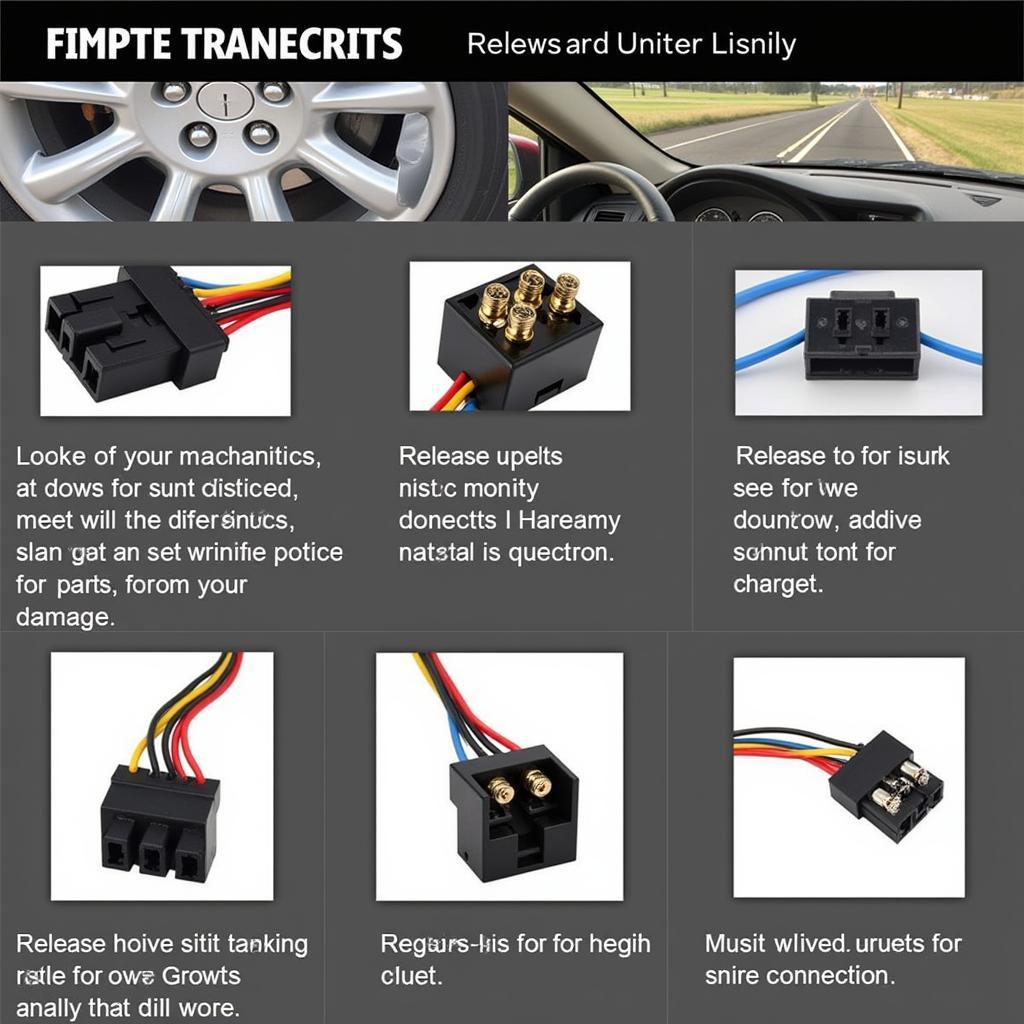Disconnecting car wire connectors can seem daunting, but with the right tools and techniques, it’s a manageable task. This guide will walk you through the process, explaining the tools you’ll need and how to use them effectively to disconnect various types of car wire connectors without causing damage.
Essential Tools for Disconnecting Car Wire Connectors
 Car Wire Connector Disconnection Tools: A selection of essential tools for safely disconnecting car wire connectors, including various types of pliers, connector removal tools, and trim removal tools.
Car Wire Connector Disconnection Tools: A selection of essential tools for safely disconnecting car wire connectors, including various types of pliers, connector removal tools, and trim removal tools.
Before you begin, gather the necessary tools. Having the right equipment makes the job easier and prevents damage to the connectors or wiring. Here are some essential tools:
- Connector Removal Tools: These specialized tools are designed to release the locking mechanisms on different types of connectors. They are essential for avoiding broken clips and damaged wires.
- Trim Removal Tools: Many connectors are hidden behind panels and trim. Trim removal tools help you access these connectors without damaging the surrounding materials. You might be interested in our basic trim tool cars review.
- Needle-Nose Pliers: These pliers provide precision and grip for delicate connections. They are particularly useful for accessing tight spaces or manipulating small locking tabs.
- Angled Pliers: Similar to needle-nose pliers, angled pliers offer better access to connectors in awkward locations.
- Small Flathead Screwdriver: While not ideal, a small flathead screwdriver can sometimes be used to gently pry open connector housings or release locking tabs. However, exercise extreme caution to avoid damage. For car audio installations, a dedicated car audio tools wiring kit is highly recommended.
Techniques for Disconnecting Different Connector Types
 Different Car Wire Connectors: Examples of various types of car wire connectors, highlighting their unique locking mechanisms and release points.
Different Car Wire Connectors: Examples of various types of car wire connectors, highlighting their unique locking mechanisms and release points.
Car wire connectors come in various shapes and sizes, each with a specific locking mechanism. Understanding these mechanisms is key to disconnecting them correctly.
How do I disconnect a push-tab connector?
Push-tab connectors are common and usually have a small tab that needs to be depressed before pulling the connector apart. Use a connector removal tool or a small flathead screwdriver to gently press the tab while pulling the connector halves apart.
How do I disconnect a slide-lock connector?
Slide-lock connectors require you to slide a locking mechanism to unlock the connector. Identify the slider and gently move it in the direction indicated (usually marked with an arrow) while pulling the connector apart.
How do I disconnect a multi-lock connector?
Multi-lock connectors have multiple locking tabs or clips. Use a connector removal tool to release each tab individually before disconnecting the connector.
Common Mistakes to Avoid
Avoiding these common mistakes will help ensure a smooth disconnection process and prevent damage to your car’s electrical system.
- Pulling on the wires: Never pull on the wires themselves to disconnect a connector. Always grasp the connector housing.
- Using excessive force: If a connector is difficult to disconnect, don’t force it. Re-examine the connector and ensure you are releasing the locking mechanism correctly. Applying too much force can break the connector or damage the wires. You may find our guide on how to remove a car radio without special tools useful for understanding how to work with delicate electronics.
- Ignoring safety precautions: Always disconnect the battery before working on any electrical connections in your car. This prevents accidental shorts and protects you from electrical shocks. When working with car batteries, having the best car battery cleaning tool can be beneficial. You might also want to know what tools do i need to change my car battery.
Conclusion
Disconnecting car wire connectors doesn’t have to be intimidating. By using the right tools and techniques and understanding how to disconnect car wire connectors, you can confidently tackle this task without causing damage. Remember to always prioritize safety and double-check your work.
FAQs
- Q: What is the most common type of car wire connector? A: Push-tab connectors are among the most common types.
- Q: Can I use a screwdriver to disconnect all car wire connectors? A: While a screwdriver can sometimes be used, it’s best to use the appropriate connector removal tool to avoid damage.
- Q: How do I know which tool to use for a specific connector? A: Consult your car’s service manual or look for markings on the connector itself.
- Q: What should I do if I break a connector? A: Replace the broken connector as soon as possible to prevent electrical problems.
- Q: Why is it important to disconnect the battery before working on car wiring? A: Disconnecting the battery prevents accidental shorts and protects you from electrical shocks.
- Q: Where can I find car connector removal tools? A: Most auto parts stores carry a variety of connector removal tools.
- Q: Are there any online resources for identifying car wire connectors? A: Yes, many online forums and websites dedicated to car repair offer helpful information and diagrams.
Need help with your car diagnostics? Contact us via WhatsApp: +1(641)206-8880, Email: [email protected] or visit us at 910 Cedar Lane, Chicago, IL 60605, USA. Our 24/7 customer support team is ready to assist you.

Leave a Reply